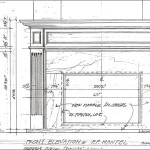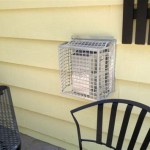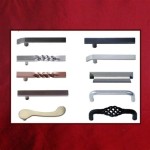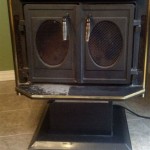Fireplace Facing Stone: Enhancing Aesthetics and Functionality
Fireplace facing stone is a decorative and functional element used to surround a fireplace opening. It serves to enhance the visual appeal of the fireplace while also providing a non-combustible surface that protects the surrounding wall and hearth from heat and potential damage. The selection of fireplace facing stone is a crucial aspect of fireplace design, impacting not only the overall aesthetic of the room but also its safety and long-term maintenance.
The use of stone as a fireplace facing material dates back centuries, reflecting a connection to natural elements and a desire for durable and aesthetically pleasing construction. From rustic fieldstone to sophisticated marble, the variety of available stone types allows for a wide range of design styles, enabling homeowners to create a fireplace that complements their existing decor and personal preferences.
Understanding the different types of stone, their properties, and the installation process is essential for making an informed decision about fireplace facing. This article will explore the various aspects of fireplace facing stone, including material options, design considerations, installation techniques, and maintenance practices.
Types of Fireplace Facing Stone
The market offers a diverse range of stone options for fireplace facing, each with unique characteristics in terms of appearance, durability, and cost. Understanding these differences is critical in selecting the most suitable stone for a specific project.
Natural Stone: Natural stone is quarried directly from the earth and cut into various shapes and sizes for use as facing material. Common types of natural stone include:
Granite: Granite is a hard, durable igneous rock known for its resistance to heat and scratching. It is available in a wide range of colors and patterns, making it a versatile choice for fireplace facing. Granite's inherent strength makes it ideal for high-traffic areas and fireplaces that experience frequent use.
Marble: Marble is a metamorphic rock prized for its elegant veining and polished surface. It is available in a variety of colors, including white, black, and various shades of gray and brown. While marble is less resistant to heat than granite, its sophisticated appearance makes it a popular choice for formal living rooms and high-end fireplaces. It is important to seal marble regularly to protect it from staining.
Limestone: Limestone is a sedimentary rock known for its warm, natural tones and textured surface. It is a relatively soft stone that is easy to work with, making it a popular choice for custom fireplace designs. Limestone is porous and requires sealing to prevent staining and water damage. Its natural, earthy appearance can complement rustic or traditional decor styles.
Slate: Slate is a metamorphic rock characterized by its layered structure and dark, muted colors. It is a durable and heat-resistant stone that can add a touch of rustic charm to a fireplace. Slate is often used in its natural, unpolished state, which enhances its textured appearance. It is also relatively easy to clean and maintain.
Fieldstone: Fieldstone is a type of natural stone that is typically found on the surface of the ground, often in fields or along riverbeds. It is characterized by its irregular shape and natural variations in color and texture. Fieldstone is often used in rustic or traditional fireplace designs, adding a natural and earthy element to the space.
Manufactured Stone Veneer: Manufactured stone veneer, also known as faux stone, is a lightweight alternative to natural stone. It is made from a mixture of concrete, aggregates, and pigments, and it is designed to mimic the appearance of natural stone. Manufactured stone veneer offers several advantages over natural stone, including lower cost, easier installation, and lighter weight. It is also available in a wide range of colors and styles, making it a versatile choice for fireplace facing.
The choice between natural stone and manufactured stone veneer depends on several factors, including budget, design preferences, and installation requirements. Natural stone offers a unique, timeless appeal and inherent durability, while manufactured stone veneer provides a cost-effective and versatile alternative.
Design Considerations for Fireplace Facing Stone
The design of the fireplace facing stone plays a significant role in the overall aesthetic of the room. Careful consideration should be given to the style, color, texture, and layout of the stone to achieve the desired look.
Style and Aesthetics: The style of the fireplace facing stone should complement the overall design of the room. For instance, a rustic stone fireplace would be well-suited for a cabin-style living room, while a sleek marble fireplace would be more appropriate for a modern or contemporary space. The selected stone should enhance the architectural features of the room and create a cohesive design.
Color and Texture: The color and texture of the stone can significantly impact the mood and atmosphere of the room. Light-colored stones can create a bright and airy feel, while dark-colored stones can add warmth and drama. The texture of the stone can range from smooth and polished to rough and irregular, depending on the desired effect. Mixing different colors and textures can add visual interest and depth to the fireplace facing.
Layout and Pattern: The layout and pattern of the stone can also play a significant role in the overall design. Stone can be arranged in a variety of patterns, such as stacked, running bond, or random. The layout should be carefully planned to create a balanced and visually appealing design. Consider the size and shape of the stones, as well as the spacing between them, to achieve the desired effect.
Firebox Dimensions: The dimensions of the firebox and the surrounding wall space will influence the amount of stone needed and the overall design of the fireplace facing. Measure the area accurately and consider the proportions of the stone to the firebox. Ensure that the stone extends far enough to protect the surrounding wall from heat and potential damage.
Hearth Design: The design of the hearth should complement the fireplace facing stone. The hearth can be made from the same stone as the facing or from a contrasting material. Consider the size and shape of the hearth, as well as its height above the floor. The hearth should be large enough to protect the surrounding floor from sparks and embers.
Mantel Integration: If a mantel is planned, its style and material should coordinate with the fireplace facing stone. A wooden mantel can add warmth and traditional charm, while a stone or metal mantel can create a more modern look. Ensure that the mantel is properly installed and securely attached to the wall.
Lighting Considerations: The lighting in the room can significantly affect the appearance of the fireplace facing stone. Consider installing spotlights or recessed lighting to highlight the texture and color of the stone. Proper lighting can enhance the fireplace's visual appeal and create a warm and inviting atmosphere.
Careful planning and attention to detail are essential for creating a fireplace facing design that is both aesthetically pleasing and functionally sound. Consider consulting with a design professional to ensure that the chosen stone and design elements are appropriate for the specific space and desired aesthetic.
Installation Techniques for Fireplace Facing Stone
Proper installation of fireplace facing stone is crucial for ensuring both its aesthetic appeal and its safety. Whether using natural stone or manufactured stone veneer, a thorough understanding of the installation process is essential. Incorrect installation can lead to structural problems, moisture damage, and even fire hazards.
Surface Preparation: The first step is preparing the surface that will receive the stone. This typically involves cleaning the wall to remove any dust, dirt, or debris. If the wall is painted or covered with wallpaper, it may be necessary to remove these materials to ensure proper adhesion. The substrate must be structurally sound and capable of supporting the weight of the stone.
Mortar Selection: Choosing the right type of mortar is critical for a successful installation. For natural stone, a masonry mortar specifically designed for stone veneer is recommended. For manufactured stone veneer, a polymer-modified mortar may be required to provide better adhesion. Ensure that the mortar is compatible with the type of stone being used and that it is mixed according to the manufacturer's instructions.
Applying the Mortar: Apply the mortar evenly to the back of each stone, using a trowel to create ridges that will help the stone adhere to the wall. The thickness of the mortar bed will vary depending on the size and type of stone, but it should typically be between 1/2 inch and 3/4 inch. Ensure that the entire back of the stone is covered with mortar to prevent voids and ensure a strong bond.
Setting the Stone: Press each stone firmly into place on the wall, ensuring that it is level and plumb. Use a rubber mallet to gently tap the stone into position. Maintain consistent spacing between the stones, using spacers if necessary. Remove any excess mortar that squeezes out between the stones. Avoid smearing mortar on the face of the stone.
Grouting (Pointing): Once the mortar has partially set, typically after 24 to 48 hours, the joints between the stones can be filled with grout. Use a grout bag or a pointing trowel to apply the grout, filling the joints completely. Smooth the grout with a jointing tool to create a consistent and professional finish. Wipe away any excess grout from the face of the stone with a damp sponge.
Cutting Stone: Cutting stone may be necessary to fit around corners, edges, or other architectural features. Use a wet saw with a diamond blade to cut natural stone or manufactured stone veneer. Always wear safety glasses and gloves when cutting stone. Ensure that the cut edges are clean and smooth before installing the stone.
Corner Installation: Corner pieces are typically used to create a finished edge on the fireplace facing. These pieces can be either pre-fabricated corner stones or stones that are cut and mitered to create a corner. Apply mortar to the back of the corner pieces and press them firmly into place, ensuring that they are aligned with the surrounding stones.
Sealing the Stone (Optional): Depending on the type of stone and its porosity, sealing the stone may be recommended to protect it from staining and water damage. Apply a stone sealant according to the manufacturer's instructions. Ensure that the stone is clean and dry before applying the sealant.
Proper installation techniques are essential for ensuring the longevity and safety of the fireplace facing stone. If unsure about any aspect of the installation process, consider hiring a qualified contractor with experience in stone installation. A professional installer can ensure that the stone is properly installed and that the finished product meets the highest standards of quality.

11 Stone Veneer Fireplace Surround Design Trends Where To Buy

Fireplaces Eldorado Stone

Stone Fireplace Surround Ideas You Ll Love Columbia Mo

The Benefits Of Thin Stone Veneer For Your Fireplace

Stone Veneer Fireplace Ideas That Will Warm Up Your Home Ply Gem
.jpg?strip=all)
Tips And Tools For Professional Stacked Stone Fireplaces

Fireplace Stone Facing Selex

Newport Cast Stone Fireplace Surround Oregon Castings And Design

11 Stone Veneer Fireplace Surround Design Trends Where To Buy

Stone For Fireplaces What Are The Best Options In 2024 Marble Com
Related Posts








